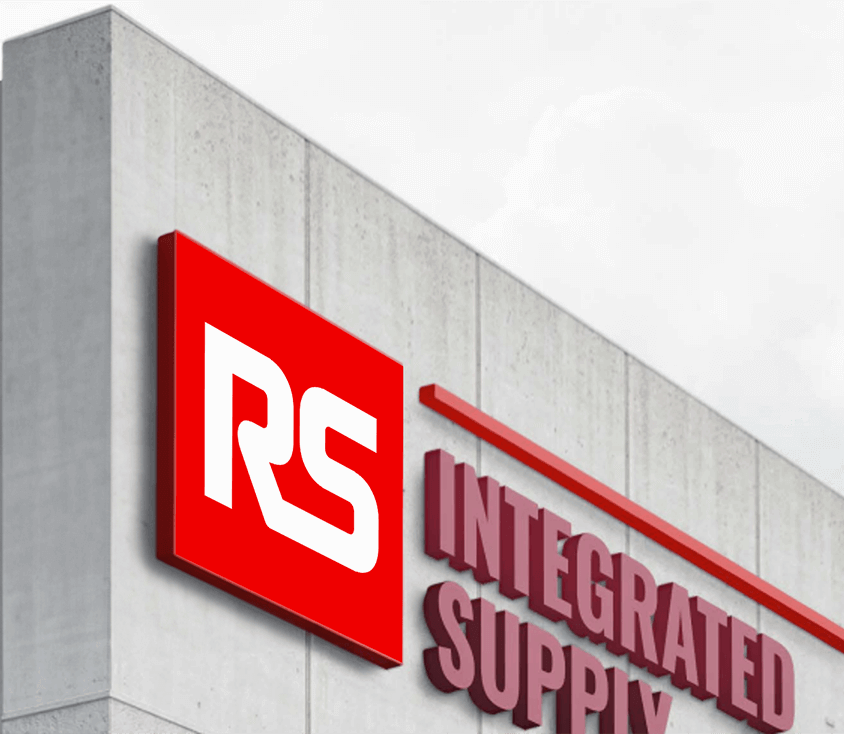Published on
Read time: 6 minutes

In a recent survey of mechanical engineers, conducted by RS and the Institution of Mechanical Engineers (IMechE), respondents rated attracting and retaining talent alongside inflation and higher costs as the biggest challenge in the next 12 months. But why is finding the right people, and keeping them, now so difficult? And what can businesses do to counteract this trend?
A competitive labor market
The two biggest challenges are connected, with inflation leading to higher salaries and increased competition for talent. “Manufacturing plants are now competing for wages that were unheard of five or six years ago,” explains William Brummett, Vice President of New Business Development at RS Integrated Supply, a global Maintenance, Repair, and Operations (MRO) supply chain services company that provides outsourced procurement and storeroom solutions. Look at the pay rates now being offered in places such as fast-food restaurants, he continues: “That’s what factories are competing with now, so labor rates are going through the roof.”
There are also specific challenges when it comes to recruiting and retaining staff to work in the manufacturing industry. It is difficult, for example, for manufacturers to offer the flexible working patterns that have become popular since the coronavirus pandemic. Public perceptions of manufacturing jobs are an issue too. “People have an outdated vision,” observes Peter Olejniczak, General Manager for Operations in North America at RS Integrated Supply. “They aren’t aware of the increasingly high-tech nature of manufacturing and the transferable cutting-edge skills that are required.”
Get ahead of the game
What can manufacturers do to overcome these obstacles?
One strategy is to make your organization an attractive place to work, which may mean rethinking how you operate. “There is a certain requirement to be in a factory, but support functions and those involved in the supply chain more than actual maintenance on site can be more flexible,” argues Simon Hilton, Senior Vice President of Business Development and Marketing for RS Integrated Supply. “Before COVID, we wouldn’t have imagined it, but it’s changed the landscape of working.”
The onus, also, is on employers to demonstrate the growth prospects available to staff working in these areas. “When you look at entry level roles, candidates are not just searching for an hourly assignment,” says Brummett, “They’re looking for a path that they can strive to stay on and have a future.”
Expectations go beyond the job itself, notes Hilton. “People have become more demanding of who they work for,” he says. “They want to work for companies that are progressive and have diverse cultures. They are particularly keen on the business they are working for having a vision.” A strong Environmental, Social, and Corporate Governance (ESG) stance plays an important role in making companies more appealing, he adds, especially for younger generations entering the workforce.
Find supportive partners
Another strategy is to outsource non-core aspects of your business such as MRO procurement and storeroom management. Why do organizations find that this helps with challenges around recruitment and retention?
“It’s not easy to recruit skilled workers for non-core activities, and the recruiting challenges we are experiencing makes outsourcing that much more attractive,” says Olejniczak. “Outsourcing allows companies to tap into a pool of skilled labor that are subject matter experts and who would otherwise be unavailable or difficult to access.”
Among the survey respondents featured in the RS and IMechE report, the top three reasons for outsourcing non-core processes related to specific workforce difficulties: too many specialized skills required (57%), lack of skills among staff (40%), and reduced headcount (35%). The right outsourcing partner, however, overcomes all these issues.
“We know exactly what type of candidate we need, what type of skill set, mentality, and approach,” states Hilton. “If I’m making a car, the job description for a role in the stores is a long way down the priority list, whereas for us, it’s our number one recruitment point.”
“The right skill set is important for our role,” agrees Brummett. “Our team doesn’t have to know how to repair a machine but they do need some mechanical aptitude so they can guide the engineers to the correct part and help them to understand what they need. The right person is always looking for solutions to the problems they are presented with rather than just moving on.”
An outsource provider can offer a career path to these recruits and those that already work in functions they inherit. “I’m probably the best example of that,” points out Olejniczak, who began his career two decades ago working in a storeroom that was taken over by a forerunner of RS Integrated Supply. “I’ve held roles from inventory specialist to procurement specialist, site operation manager, director, and now general manager of operations, overseeing 20 contracts with a total annual spend of more than $140 million.
“A company that specializes in the supply chain will have career path strategies for employees and provide the right training. The experience allows employees to advance their career in the direction that they want to go. If you have a good work ethic and want to succeed, the sky is the limit because you’ll have a lot more opportunities in this kind of environment.”
Focus on what matters
Furthermore, by providing expertise in non-core areas, an outsourcing partner allows the client and its workforce to better focus on their top priorities. “Our business makes your maintenance more effective,” says Brummett. “Instead of your maintenance technician having to spend time online searching for a part, we help them to turn wrenches more – because you want your maintenance technicians to be turning wrenches and people like us to be finding parts for you.
“We can make sure that a client’s staff is doing its core job, and we handle all of the ancillary stuff,” he continues. “We analyze their business as part of our implementation and give them an estimate of how many hours we could give back to them. Maybe it’s three to five hours per week per technician, but if you have three technicians, that’s an additional headcount you can add to the business without taking on anyone extra. We give all those hours back to you.”
It’s perhaps no surprise, therefore, that so many manufacturers are finding outsourcing their MRO processing an effective way to overcome the challenges of finding and keeping talent.




